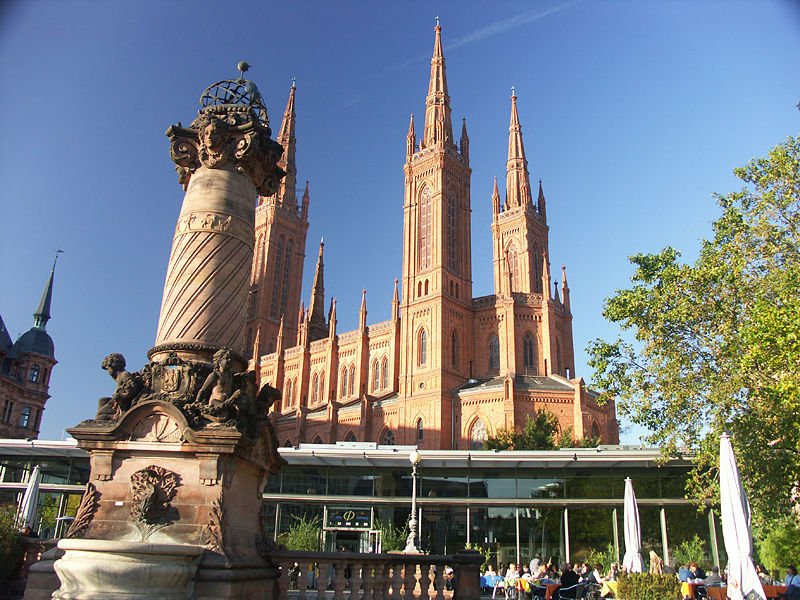 Marktkirche, Wiesbaden
Marktkirche, WiesbadenSource: https://commons.wikimedia.org/wiki/File:Wiesbaden_Marktkirche_B.jpg
Author: Mju1975

Wiesbaden is the capital of the state of Hesse in Germany. It city covers 203.9 sq km (78.7 sq mi) and has a population of 276,000 (2011 estimate). It is located on the northern bank of the river Rhine, below its confluence with the river Main. At Wiesbaden the north-flowing river Rhine makes a curve and begins flowing west. On the other side of the Rhine is Mainz, the capital of Rhineland-Palatinate.
Wiesbaden is on an average elevation of 115 m (377 ft). Forested land covers the northern part of the city whereas to the west and east are farmlands and vineyards. The highest point in Wiesbaden is the top of Hohe Wurzel, at 608 m (1,995 ft).
The name Wiesbaden means "meadow baths", and as would be expected of towns in German with "Bad" or "Baden" to their names, Wiesbaden is a spa town. At one time, it had 27 hot springs, though today the number is down to 15.
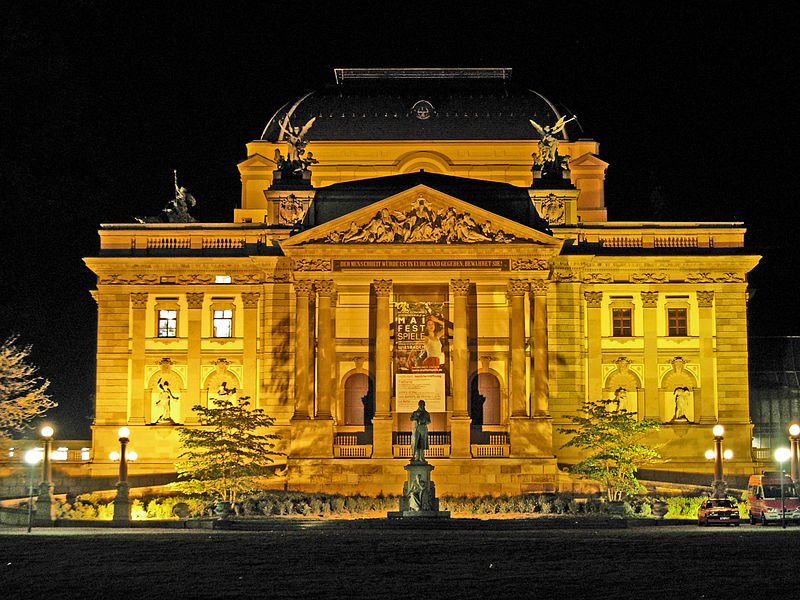 Hessisches Staattheater, Wiesbaden
Hessisches Staattheater, WiesbadenSource: https://commons.wikimedia.org/wiki/File:Wiesbaden-Theater0138.jpg
Author: Pedelecs

The Wiesbaden area bears evidence of human habitation going back to the Neolithic age, however the town was only established when the Romans built a fort here, and in due course, discovered its thermal springs. The Wiesbaden of Roman times was called Aquae Mattiacorum, meaning "Mattiachi's Water", in reference to the Germanic tribe that inhabited the area. The springs also produced a mineral used in making red hair dye which was fashionable among Roman women of that time.
In AD 260, the Alamanni - another Germanic tribe - captured the Roman fort, but by 370, were allied to the Romans, and were given charge of the area against other Germanic tribes. In 496, the Alamannis were defeated by the Franks under Clovis I, and were ousted from Wiesbaden. The town became the site of a royal palace of the Franks in the 8th century.
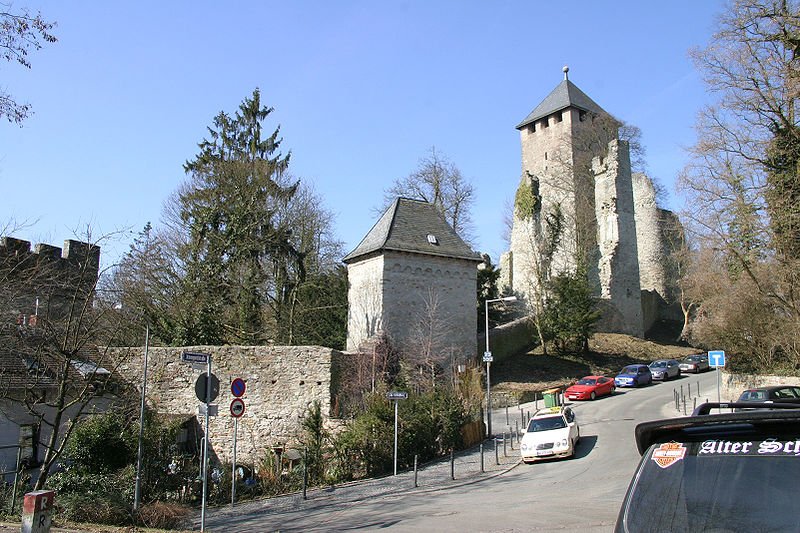 Burg Sonnenberg, Wiesbaden
Burg Sonnenberg, WiesbadenSource: https://commons.wikimedia.org/wiki/File:Wiesbaden_burg_sonnenberg_1.jpg
Author: Toddy

The name Wiesbaden goes back to around AD 828, when it first appeared as Wisabada, in the documents attributed to Einhard, the biographer of Charlemagne, the King of the Franks who became the first ruler of the Holy Roman Empire. Wiesbaden became an imperial city within the Holy Roman Empire in 1232, but in 1242 suffered much destruction on the orders of Archbishop Siegfied II of Mainz, when Emperor Frederick II was up against the Pope.
Wiesbaden converted to the Protestant faith in 1543. Its town hall, dating from 1609-10, is today the oldest building in Wiesbaden still standing. The Holy Roman Empire was dissolved in 1805, following Napoleon's victory over Austria, and in 1815, Wiesbaden became the capital of the Duchy of Nassau, within the German Confederation.
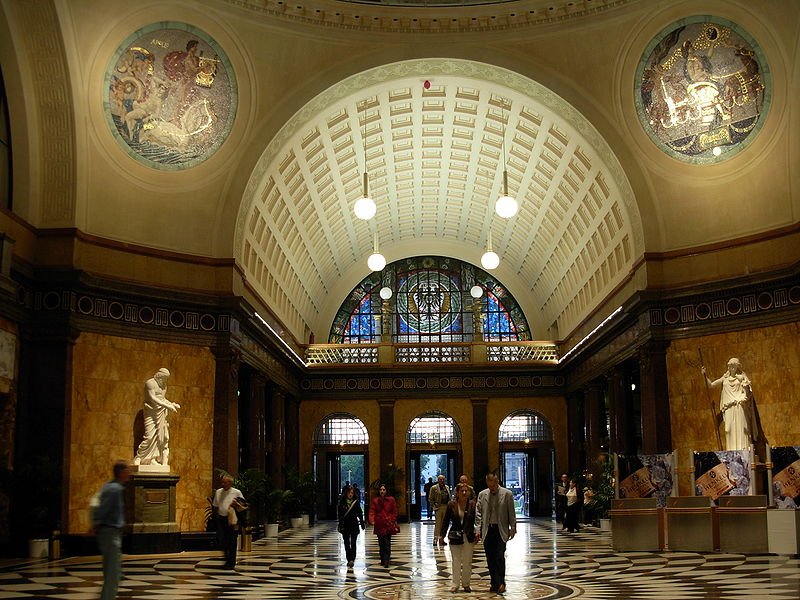 Foyer of Kurhaus, Wiesbaden
Foyer of Kurhaus, WiesbadenSource: https://commons.wikimedia.org/wiki/File:Kurhaus_Foyer_0192.jpg
Author: Pedelecs

In 1866, Nassau was annexed by Prussia following the Austro-Prussian War, and became part of the province of Hesse-Nassau. During this part of history, the 19th century, that Wiesbaden began to develop as a spa town and regional administrative seat. Kaiser William II, who was the German Emperor and King of Prussia, made it his inofficial summer capital.
Wiesbaden was occupied by French troops following the First World War, from 1918 until 1921. Allied forces maintained a presence in the city until 1930. In their place came the Nazis, which heralded the start of systematic discrimination against the Jews. In the pogrom of 1938, the city's main synagogue was destroyed. By the end of the Second World War, some 1,200 Jews in Wiesbaden had been killed or deported by the Nazis.
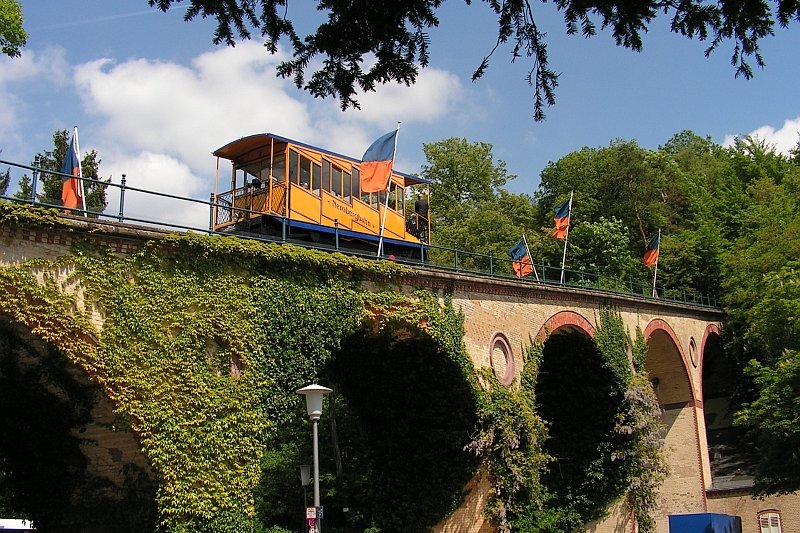 Neroberg funicular train, Wiesbaden
Neroberg funicular train, WiesbadenSource: https://commons.wikimedia.org/wiki/File:Wiesbaden_Nerobergbahn_ESWE_Verkehrsbetriebe_auf_Viadukt_von_1907_von_Talstation_zum_Hausberg_Foto_2008_Wolfgang_Pehlemann_Wiesbaden_0ICT0061.jpg
Author: Wolfgang Pehlemann Wiesbaden Germany

As it is not a major industrial town, Wiesbaden was spared the destruction that was meted out on the industrial cities of Germany. On 1 December 1946 Wiesbaden became the capital of the federal state of Hesse, edging out Frankfurt, which was in fact a bigger city, but suffered heavier destruction than Wiesbaden. The US Air Force was also based in Wiesbaden from 1953 until 1973.
Today Wiesbaden continues to be a popular domestic tourist destination in Germany. Its main attractions are its spas and its casinos, which began operating in the 19th century, but was closed from 1872 until 1949, when the government of Prussia outlawed gambling. The city has quite a number of historic buildings that are worth visiting.
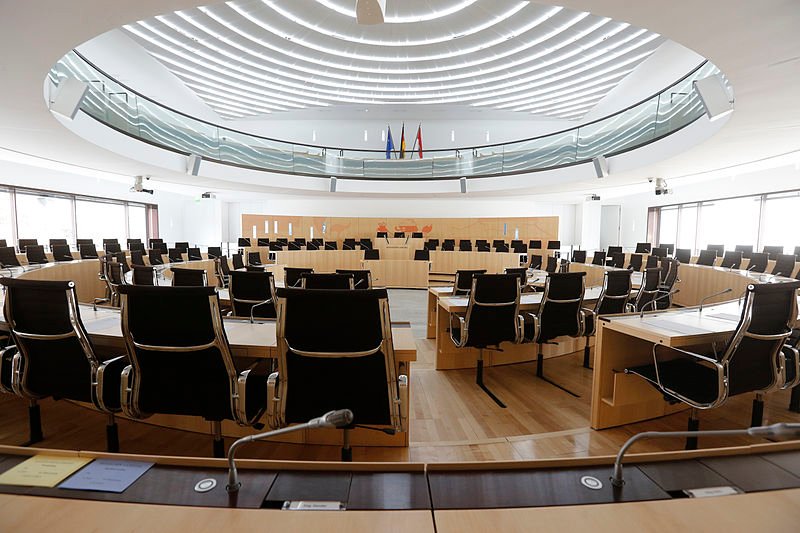 Plenary Hall at the Hessian Parliament, Wiesbaden
Plenary Hall at the Hessian Parliament, WiesbadenSource: https://commons.wikimedia.org/wiki/File:WP_Landtagsprojekt_Hessen_-_Plenarsaal_-_001.JPG
Author: Sven0705

Going to Wiesbaden
You can easily get to Wiesbaden from Frankfurt Airport. From the Frankfurt subway station, buy a ticket for Wiesbaden on the S-Bahn or Deutsche Bahn. Wiesbaden is often the terminus of the regional train, and some times it's Mainz. The fare is €3.80. The same journey by taxi will cost you €60.Places of Interest in Wiesbaden
- Altes Rathaus
The Old Town Hall, completed in 1610, is the oldest building in Wiesbaden. - Burg Sonnenberg
Castle built by brothers Heinrich and Ruprecht of the House of Nassau in 1201-1203 to protect Wiesbaden against the Lords of Eppstein following a border dispute. - Griechische Kapelle
Literally the Greek chapel, but officially the Russian Orthodox Church of Saint Elizabeth in Wiesbaden (Russisch-Orthodoxe Kirche der heiligen Elisabeth in Wiesbaden), this is the only Russian Orthodox church in the city, and is located on Neroberg. - Hessisches Staatstheater
The state theater of Hesse was built in 1892-4 by the German Emperor Wilhem II in a Neo-Renaissance-Neo-Baroque style. - Kurhaus
The spa house of Wiesbaden, built in the early 20th century, has a grand façade. It houses a casino within its premises. - Marktkirche
The Market Church is a Protestant church built in the Neo-Gothic style in 1852-62. Its steeple is the highest structure in Wiesbaden. - Neroberg
Hill station to the north of Wiesbaden, reached by a funicular railway. - Schloss Biebrich
Residence of the Nassau-Usingen counts until the early 19th century. - Stadtschloss
The former ducal palace is today the state parliament of Hesse.

Copyright © 2003-2025 Timothy Tye. All Rights Reserved.

 Go Back
Go Back